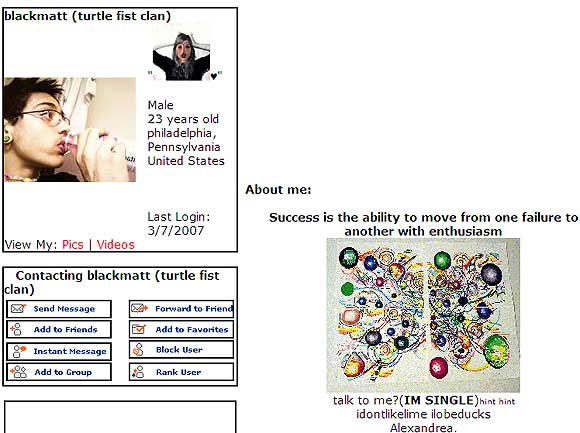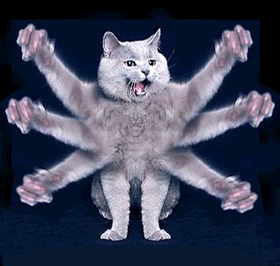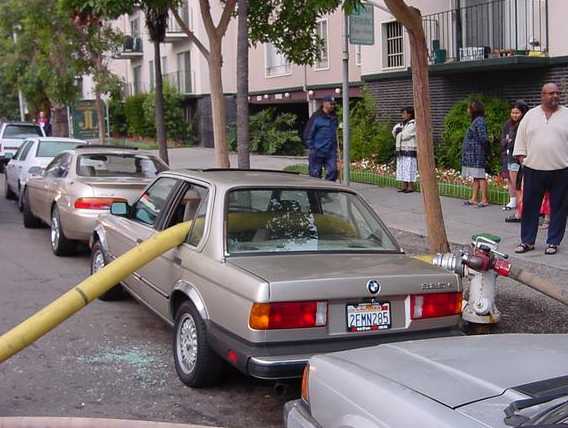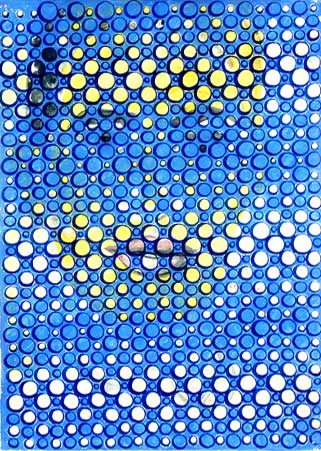View current page
...more recent posts

Interesting sounds/patterns/glitches by Mary Benedicto: Loops, Flowers, The Swarm, others... The music is in the Pole/Boards of Canada spectrum (albeit fragmentary) and the visuals are consistently psychedelic/oceanic but also cut up electronically so that you are not allowed to completely "sink into" them.
Also, thanks to Nasty Nets East for introducing me to Silicious (Kathleen Daniel), who rules YouTube with pleasantly deranged music and video of her own creation. The tunes are especially accomplished, melding classic R&B crooning, ESG-style electro-funk, Sun Ra tonal adventurousness, and garageband. (Check out Georg--that Giorgio Moroder bassline with the "la di da di/we like to party" chorus is to die for). I prefer the videos with free-floating Bryce or Poser characters to the obvious Photoshop filters, but it's all pretty great--Henry Darger-esque but with a heart and a conscience and healthy as opposed to brutal sexuality (and in 3D and 4D as opposed to 2D and 4D).









["Planetesimals" video removed for now--these captures are the "piece" (I think it works as a full-sized video but I wasn't happy with the Quicktime).]

artist unknown - hat tip to SHM
Rest in Peace, Jean Baudrillard. Without you the art world since 1982 or so would have lost all meaning and purpose. Let the inevitable hyperrealization of your life and work begin.
text buffer from wikischmedia:
Much of Baudrillard's notoriety as an academic and political commentator comes from his deliberately provocative claim in 1991 that the first Gulf War 'did not take place.' His argument — which sparked heavy criticism from the likes of Chris Norris ... who perceived, in Baudrillard, a denial of empirical events — described the war as the inverse of the Clausewitzian formula: not 'the continuation of politics by other means', but 'the continuation of the absence of politics by other means.' According to Baudrillard, Saddam Hussein was not fighting the Allied Forces, but using the lives of his troops as a form of sacrifice to preserve his power (p. 72 in the 2004 edition); and neither were the Allied Forces fighting Saddam, they were merely dropping 10,000 tonnes of bombs a day as if to prove to themselves there was an enemy to fight (p. 61). So too were the Western media complicit, presenting the war in 'real time' and recycling images of war to propagate the notion that the two enemies were in actual conflict. But, Baudrillard followed, this was not the case: Saddam did not use what military capacity he had (his air force); nor was his power eventually weakened (as he managed to put down the insurgency against him after the war ended). And so, Baudrillard concluded, little politically changed in Iraq: the enemy was not defeated, the victors were not victorious. Ergo, there was no war: the Gulf War did not take place.

hat tip to steve
Update: the text originally published here had little to do with the above image. The picture is complete unto itself, a visual one-liner, not requiring a word of explanation or elucidation. (Except that it's a great bit of real-life performance art.) Unfortunately the photo was "vibrating badly" with the one below it on the page, to use curator Walter Hopps' term for two unharmonious paintings in an exhibition hanging. He would sometimes substitute a lesser picture next to the one he considered the masterpiece to remedy this. On the blog another solution is to have a "text buffer"--some random snippet that insulates the two images from each other. Unfortunately including text in the same blog post (out of sheer laziness of not wanting to create an intervening buffer post, which is an involved process) inevitably invites relating such text to the image above it. It was hoped that Paul Virilio's thoughts about "the accident" (yanked from Wikipedia and now moved to the comments) could be read ironically in tandem with the firehose picture, since what it depicts is not an accident--but that's asking a lot in a fast-reading blog scenario. Thanks to K for noting the problem. This meta type text now serves as the buffer. blah blah

DAVID MORENO
Untitled, 2002; ink on paper; 12.75 x 9.25"
#6 of a suite of 6 (image from Feature Gallery website)
Never seen this piece in person. It might well work better as a web graphic than an object. "Graphic" meaning art, it should be added, but having a particular punch or "read" in the concise, compressed format of a web page. "Accidental enhancement" or "second-level improvement" should be added to the criteria art historians consider in evaluating work.
A breakthrough moment on this score occurred a few years ago when the Museum of Modern Art collected several of Van Gogh's "postman of Arles" paintings for a small group show. The museum couldn't get loans for all of them, so one was represented by a digital reproduction, mounted on a panel so it read like a painting. With its bright, saturated colors, crisp "sharpened" resolution, and excellent lighting, it stole the show--making the others appear dingy, old, and fussed-over.
Addendum to an earlier post: In addition to VVork Annotated, we also need the Anti-VVork. The latter consisting of art projects with no explanation, purpose, socially conscious rationale, tag line, or associated sound bite. It would be art not reducible to or reproducible as photography. It would be private jokes, arcane abstractions, and/or noise with no discernible or announced organizing system. It would be bad art, failed art, non-art (i.e. found things with no original purpose as art), and "embarrassing" art (i.e., too personal, too self-revelatory, too unhip or "square"). It would be expressionistic as opposed to ironic, not the faux expressionism of the current New York painting world but some kind of atavistic, unassimilable emotion. Just trying to think of everything VVork is not. More items will possibly be added.
